Loitering ammunition "Scalpel" has reached mass production
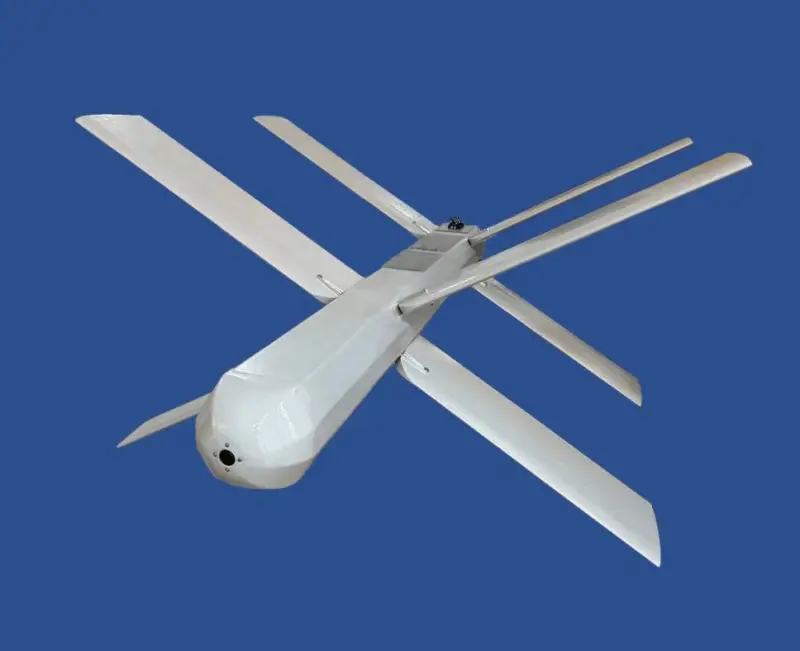
UAV/BB "Scalpel" in flight configuration
At the beginning of last fall, it became known about the development of the promising Scalpel loitering munition. In the near future, it was planned to carry out all tests of this product, bring it to production and begin mass deliveries to the troops. The assigned tasks were successfully completed, and now the start of a full-fledged series is announced. By the end of the year, thousands of new ammunition are expected to be built and sent to the army.
Initiative development
The existence of a multi-purpose unmanned disposable platform/loitering munition called “Scalpel” became known in early September last year. By this time, the project had passed the development stage and reached flight testing. In addition, plans have already been drawn up to launch mass production.
The promising UAV was developed on its own initiative by the Vostok design bureau. This organization was founded in the recent past by veterans of the DPR People's Militia battalion of the same name (now the 114th Separate Guards Motorized Rifle Brigade of the Russian Army). The design bureau is developing UAVs of various classes and has already presented several projects.
In September 2023, it was reported that the Scalpel product was undergoing flight tests, and in the near future it would enter the combat zone. By that time, Vostok Design Bureau had received applications for the supply of such equipment from a number of units of the Russian army. Already in October, pre-production UAVs were expected to be shipped to units for some kind of military testing.
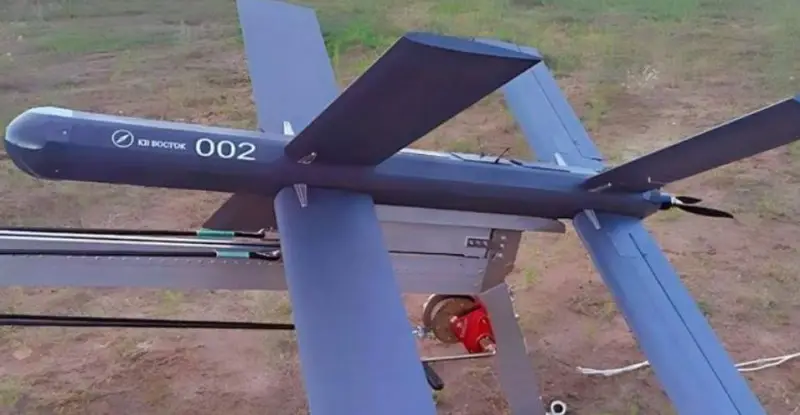
Product on launcher
The first reports of the use of “Scalpels” in the Special Operation zone appeared in mid-November. A small-scale batch of 15 products was transferred to one of the units for testing in real combat conditions. The drone received mostly positive reviews. Operators noted good controllability, ease of aiming and stability of the device during a dive. In addition, preparing the product for departure turned out to be simple and convenient.
At this stage, Vostok Design Bureau could produce up to 20 drones per month, but expressed readiness to expand small-scale production if there were orders. In addition, it was planned to continue improving the existing design. By the end of January, they were going to replace the optical means of the UAV and introduce new functions of the control system. The ground-based equipment of the complex also needed to be improved.
On February 29, 2024, the development organization announced the start of full-scale mass production of Scalpel products. By the end of the year, it is planned to produce several thousand of these UAVs, but the exact volumes of production and orders, for obvious reasons, are not announced. At the same time, the improvement of the unmanned strike system will continue. In particular, it will include a reconnaissance drone of its own design.
Simplified analogue
The Scalpel project is based on several interesting ideas, through which it was planned to obtain the most favorable ratio of technical characteristics, operating costs, etc. At the same time, the appearance of the new UAV / BB was formed with an eye on existing models of this class, namely, products from the Lancet line.
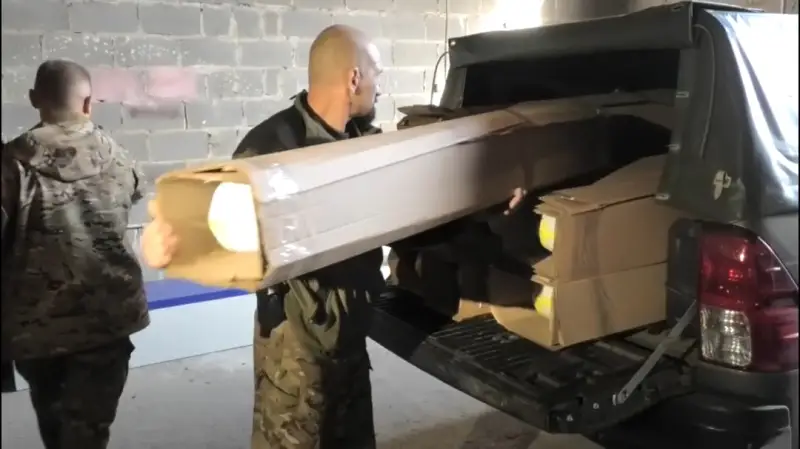
Transfer of small-scale UAVs in November 2023
The disposable multi-purpose platform "Scalpel" was created as a simpler and cheaper functional analogue of the "Lancet". It was planned to reduce the cost due to an acceptable simplification of the design and a slight reduction in the tactical and technical characteristics. Reportedly, all these tasks were successfully solved, and the finished UAV has the necessary technical and economic indicators. In particular, as of November 2023, the price of one “Scalpel” was at the level of 300 thousand rubles.
In its architecture, “Scalpel” is similar to “Lancets”. It received an elongated fuselage of small cross-section, to which two X-shaped wings with rectangular planes are attached. The wings are removed for transportation. Plastic for the construction of the airframe was chosen to simplify production. The dimensions of the drone have not yet been specified. Its length can be estimated at at least 1,2-1,5 m. Take-off weight is only 10,5 kg.
Like other lightweight UAVs, the Scalpel has an electric propulsion system. Part of the fuselage volume is given over to the battery, and in the tail there is an electric motor with a pushing propeller. The device develops a cruising speed of 120 km/h and has a flight range of 40 km.
The launch is carried out from a rail catapult placed on the ground or on a vehicle. This product has undergone some refinement in recent months. As a result, the catapult became more compact and its deployment accelerated. Landing of the BB is not provided - in any case, the operator must find the target and hit it.
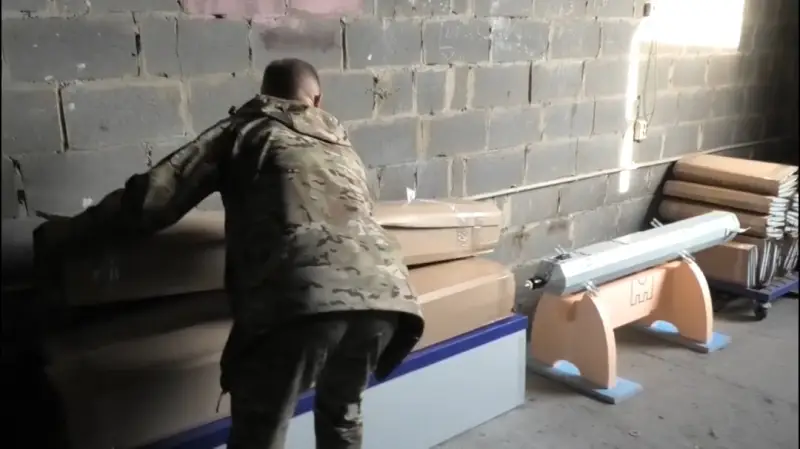
"Scalpels" in transport form. In the background is a UAV without wings
To search for a target and subsequent guidance, the UAV has an optical-electronic system. It was reported that the camera could be used on a gimbal with magnification up to 10x-30x. The control system allows you to receive and execute commands from the operator. The development of target acquisition and homing functions to an object selected by the operator was also carried out. Measures are being taken to protect radio communication channels from jamming.
“Scalpel” is called a platform due to its unusual approach to combat load. This UAV/BB does not have a standard warhead and can carry different ammunition. To accommodate them in the fuselage there is a compartment with a diameter of 125 mm and a length of 650 mm. Cargo weight – up to 5 kg. The operator has the opportunity to independently select the optimal ammunition to solve the task and place it in the UAV. This payload architecture increases the flexibility of using the BB and simplifies its production.
Element of the system
The new loitering munition/multi-purpose platform “Scalpel” has been successfully brought into mass production and is already being used against real targets in the Special Operations area. In the near future, the intensity of use of such technology will increase, and it will fully demonstrate its capabilities and potential. However, we can already say why the new ammunition is interesting for the army and how it can affect the UAV fleet.
It should be noted that “Scalpel” was created on its own initiative by a team of enthusiasts. Recently, a lot of new organizations have appeared in our country, engaged in the development and production of various drones. In the case of Vostok Design Bureau, we are talking about specialists with experience in operating UAVs in front-line conditions, and this will be useful when creating new projects.
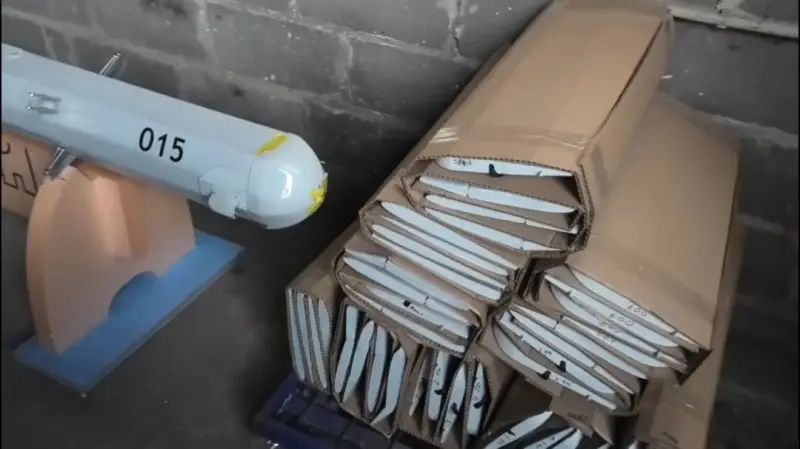
UAV without packaging and wings for it
“Scalpel” is built on the basis of an interesting concept that takes into account the existing conditions and needs of the troops. This BB is designed as a simpler and cheaper analogue of the existing Lancet, but is not considered as its competitor. On the contrary, the new product should complement the Lancets to increase the flexibility and efficiency of using unmanned aviation and at the same time reducing costs.
The task of simplifying and reducing the cost was successfully solved, and with the achievement of fairly high characteristics. At the same time, interesting ideas were introduced. First of all, it should be noted that the combat load is modular with the ability to use a variety of ammunition. In addition, the possibility of consistent refinement and development of electronics and control systems, which is now being realized, is of great importance.
Wide range
To date, our army has formed a fairly wide range of unmanned aerial vehicles for attack purposes, including a whole range of light disposable loitering ammunition. Thanks to the Vostok Design Bureau, this series now includes another product that combines fairly high tactical and technical characteristics and limited cost.
The Scalpel UAV/BB has reached series production, and mass deliveries to the troops should begin soon. The pace and volume of application of such technology will increase, and it will be able to contribute to overall successes. At the same time, it should be expected that the new Scalpels will be used in conjunction with other drones in their class, and this will have a positive impact on the overall results.
Information